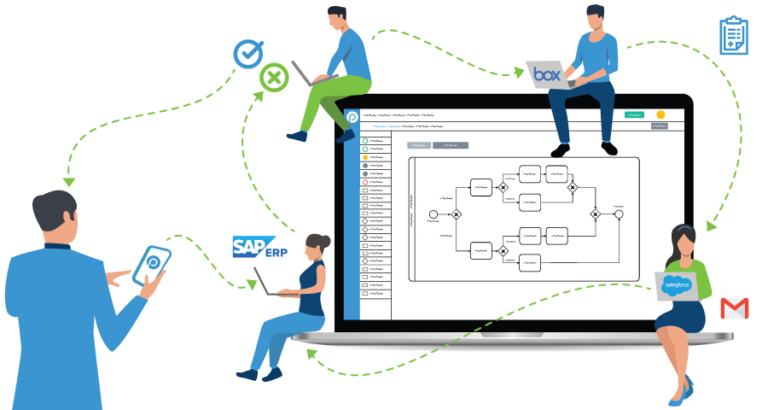Low Code is Conquering The World. Here’s why.
To begin, low-code is a methodology and approach to software design that allows business users to develop applications that only IT could produce previously. Low-code is powered by three major components: drag-and-drop functionality, easy integration with third party apps, and the ability to reuse components that have already been created.
This can apply to any kind of software, and most software types are going in the low code direction if they aren’t already on their way. Look at WordPress, Wix, Weebly, or SquareSpace; these four ultra low-code to no-code website design platforms are eating the enterprise CMS industry alive. All of these companies, until very recently only scrappy startups or open source projects, are eating up billions of dollars in market share from bigger companies that thought they had mastered their craft.
But it doesn’t end there. Every software company and developer has to consider low code when thinking about how to design software. There are a ton of benefits to low code. First, it gives the power of software development to non-technical business users to build solutions without IT. That doesn’t only drive efficiencies but it allows the personnel with the most intimate knowledge of the problem to design the solutions themselves.
Low Code development platforms also decrease the occurrence of bugs and the amount of quality assurance (QA) engineers typically employed to find and report them. As code is written in the background as the end user designs their app, there is no room for the human error that leads to bugs in software development. Speed is also key as drag and drop designers make it much faster to build apps by negating the need for hours of writing and testing code. The result is higher efficiencies and lowered costs while bringing the problem solver closer to the solution.
So this creates the “Citizen Developer” persona. This is the person who doesn’t know HTML/CSS/JS or any programming language, but builds apps on a daily basis nonetheless. This is a major breakthrough for the tech industry but it is not yet fully understood nor adopted, and in the case of low code adoption, it is not always executed well. Low Code needs to be seamless and intuitive for the end user, it requires a sophistication rarely seen in software applications and is a tough target for all software companies.
There are some doubts and concerns about low code but the benefits definitely outweigh them. The major concern is whether most low code software applications can handle large scale, mission critical enterprise applications. This concern typically comes from the companies who have not made it to low-code and have reigned supreme for decades. That said, there is some merit in that argument. Most low-code development platforms were built for small to mid sized businesses or individuals before they went viral and developed enterprise flavors of their solutions. In some slices of tech, this argument against low code can be made but in more and more, it cannot.
Another concern is whether low-code makes development cheaper or easier. Why? Well if employees, typically called “business users,” are building apps all day, isn’t there an opportunity cost there? And if they’re building a ton of apps and a lot of them are going unused, doesn’t that create issues with shadow IT? These concerns are worth noting, but are no reason to ignore the low-code revolution that is already well underway.
Low Code is leveling the playing field in many ways across the board by giving power to non-technical users typically reserved for developers. This has and will continue to bring innovation on a new front and also speed up and improve efficiencies across organizations from startups to Fortune 500 companies.



